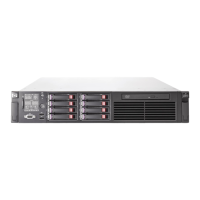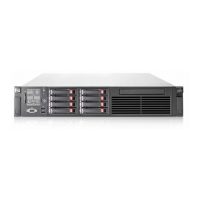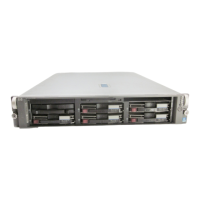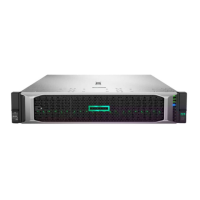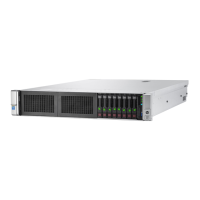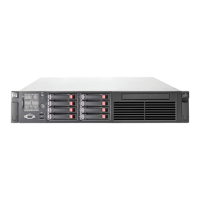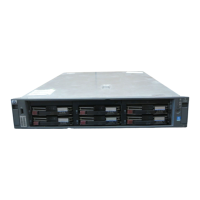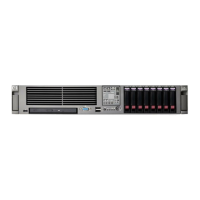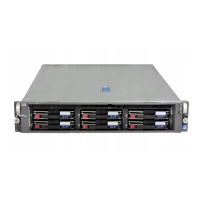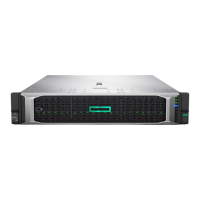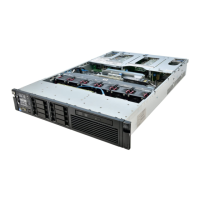• Dedicate a separate disk resource for a Quorum disk. Because the failure of the Quorum disk
would cause the entire cluster to fail, HP strongly recommends that the disk resource be a RAID
1configuration.
• Create a small partition [A minimum of 50 m egabytes (MB) to be used as a quorum disk. HP
recommends a Quorum disk be 500 MB.]
During the Cluster service installation, a drive letter must be provided for the Quorum disk. H P
recommends the drive letter Q for the Q uorum disk. It is also helpful to label the volume Quorum.
Configuring shared disks
Use the Windows Disk Management utility to confi gure additional shared disk resources. Verify that all
shared disks are formatted as NTFS and are designated as Basic.
Additional sha red disk resources are automatically added into the cluster as physical disk resources
during the in
stallation of cluster services. Each physical disk resource will reside in its own cluster group.
Verifying disk access and functionality
Write a file to each shared disk resource to verify functionality.
At this time, shut down the first node, power on the next node and repeat the Verifying Disk Access and
F unctionality step above for all cluster nodes. When it has been verified that all nodes can read and
write from the disks, turn off the cluster nodes and power on the first, and then continue with this guide.
Configuring cluster service software
It is necessary to configure the cluster by launching Cluster Administrator. Follow the steps in the next
section to configure the cluster. It is possible to add seven additional cluster nodes for an eight node
cluster. Refer to the associated Storage Array d o cumentation to determine the number of cluster nodes
that are supported by the specific array in use under Windows Storage Server 2003.
Cluster administration (cluadmin)
Cluster Administrator (cluadmin) provides the ability to manage, monitor, create and modify clusters
and cluster resources.
Using Cluster Administrator
Cluster Administrator shows information about the groups a nd resources on all of your clusters and
specific information about the clusters themselves. A copy of Cluster Administrator is automatically
installed on a cluster node when the Cluster service is installed.
Use Clus
ter Administrator to create and manage the following types of resources:
• Physical disks
• File shares
• Virtua
l servers, which consist of a network name and IP address resources
• NFS file shares
HPProLiantDL380G5StorageServer 129
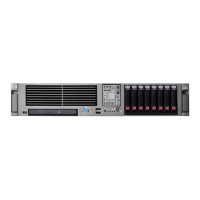
